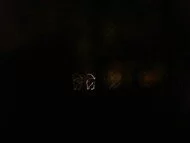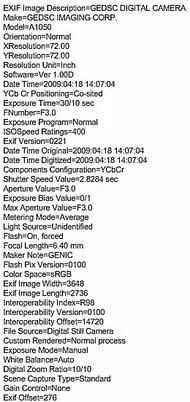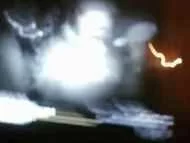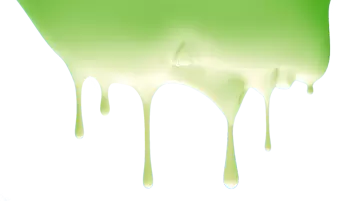Can exif data tell us more about ghost pictures?
by TKay
Exif stands for "Exchangeable Image File Format." We show you how to use this tool to examine ghost photographs for authenticity.
The Definition of Exif According to Wikipedia:
"Exchangeable image file format (Exif) is a specification for the image file format used by digital cameras. The specification uses the existing JPEG, TIFF Rev. 6.0, and RIFF WAV file formats, with the addition of specific meta data tags. It is not supported in JPEG 2000, PNG, or GIF."
What this means is that almost every digital camera saves photographs as JPEG (.jpg) files with the Exif data embedded into the image itself.
Exif information will show the type of camera, shutter speed, whether the flash was on or off, the time and date of picture, as well as other information. Posting this information will help you understand what your settings were at the time the picture was taken and why you received the results you did in many cases.
If you are like me, I take many pictures and a lot of the times I forget exactly what the camera did, meaning if the shutter took a longer time or if I had the flash on, etc. This information is preserved by almost every digital camera and is the true information of the settings of your camera at the time the photo was taken. This is why we, in most cases, ask for the original picture, not one that has already been cropped, marked with circles, arrows or changed in any way.
 Photo Seen Here:
Photo Seen Here:
"...I moved the camera slightly. I had set the shutter speed on three seconds. This is a light from the neighbor's house."
Notice how lights in this photograph are blurred due to the camera's shutter being left open longer. When we look at the exif data, below right, you can see the shutter speed was set at 2.8284 seconds which is very long. Many light anomalies in ghost pictures are accidentally created by slight camera movement and a slow-shutter speed.
 For anything lower than a 1/60 exposure time, the use of a tripod is needed to prevent blur. Of course if you have a slow shutter speed and a moving object, lets say a distant car light, you will most likely get some type of light anomaly. I have noticed since I switched to a smaller camera it is hard not to get a blur, because when the shutter button is pressed downward, I tend to move the camera.
For anything lower than a 1/60 exposure time, the use of a tripod is needed to prevent blur. Of course if you have a slow shutter speed and a moving object, lets say a distant car light, you will most likely get some type of light anomaly. I have noticed since I switched to a smaller camera it is hard not to get a blur, because when the shutter button is pressed downward, I tend to move the camera.
I just wish people would understand that you really cannot determine what is in a picture if that picture is blurred. The blurriness just creates pareidolia.
Many digital cameras offer night time flash settings. Test them out before using them during ghost investigations. Some of these flash settings will automatically extend the shutter speed or exposure time (and again are often for tripod-use only to eliminate movement of the camera). The best thing to do is to play with your camera, change settings and snap away. Look at what happened at different shutter speeds and modes.
Exif data will also tell (in most cases) if a picture was run through a photo-editing program. When presenting a ghost photo as evidence, in most cases, only the original will be accepted.
How to View Exif Data
To access Exif information on a photograph, most computers use a Windows operating system. Simply, right click on the picture file (or if you have it opened in Windows Photo Gallery, right click on the photograph) and select "properties." Select the "Details" tab and the Exif information should appear.
 Photo seen here:
Photo seen here:
Light anomalies produced by slight camera movement coupled with lengthened exposure time/shutter speed.
Some of our Angels & Ghosts friends use a program called JPEG-Snoop (thanks Bathory) to analyze the source of an image to test its authenticity. You can download the software for free here: JPEG-Snoop.
Know that JPEG-Snoop is not always correct in its assessment as to whether a ghost picture was altered or not. For example, we recently had a cell phone photo posted and the program said it had been altered, though, it was not. This was likely due to the image being compressed and sent to a website by the cell phone. Still the program is another tool in the tool belt for the ghost enthusiast!

